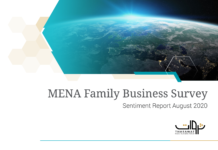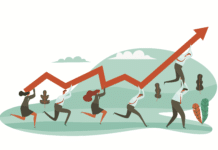Interview with Professor Ratna Chinnam, Wayne State University
What is the ideal purpose of big data in today’s business environment? This is a question Ratna Chinnam has been exploring for more than a quarter century now. Dr. Chinnam is one of the world’s foremost experts in Big Data & Business Analytics. He’s a Professor in the Industrial & Systems Engineering Department at Wayne State University and has authored over 150 publications covering the domains of business analytics, supply chain management, freight logistics, operations management, sustainability, healthcare, and smart and connected systems.
In conducting his research, he has collaborated with such corporate giants as Ford Motor Company, General Dynamics, Intel, and Goodyear, just to name a few. He has worked with close to 40 different companies touching on the fields of automotive, healthcare facilities, defence contractors along with a series of small to medium start-ups.
Tharawat Magazine had the opportunity to speak with Dr. Chinnam to discuss the emergence of big data analytics in today’s business environment and how all businesses can best make use of this very powerful tool.

How would you define “business analytics”?
Analytics can be defined as the application of machine learning methods, statistical methods, optimization methods to drive business success. They tell us how to improve customer service. How to improve supply chain management. How to improve product development. How to improve manufacturing. And many other things.
Much of the business community does what we call descriptive analytics. So, most companies tend to have historical data. And then they can develop dashboards around, the status quo.
The other name for this is called business intelligence platforms, or BI dashboards. Most of these BI platforms, or descriptive analytics platforms, only look at historical data. An informed entrepreneur or business manager has to digest that information and look to the future more confidently. Predictive analytics is about projecting historical patterns into the future.
The final step would be prescriptive analytics. This deals with what kind of actions we must take based on the predictive analytics. So, the decisions that the firm has to take, both strategic and tactical decisions, as well as operational decisions to maximize revenue or maximize profitability.
What do you feel are the top reasons why businesses hesitate or maybe do not know where to start when it comes to integrating big data analytics into their decision making?
Irrespective of the industry, I have yet to meet a company that has really excelled in leveraging the wealth of data that they have. There are several reasons for this. Most companies have historically developed IT platforms in isolation. They are not really designed to facilitate easy exchange of information with each other. If you really don’t have the data at your fingertips, you’re not able to be nimble.
The second point would be culture. Historically there was not much recognition within leadership as well as senior managers regarding the power of analytics and data-informed decision making. They have not really been trained on the importance of information technology and how it can be leveraged to drive business success.
And then there are a number of other challenges, as well. For example, the company might have a presence on Facebook, or on LinkedIn. And then they are trying to just mine that data to do things like sentiment analysis. But that’s not where the opportunity is. Whether it be a small business or a medium-sized business, every business has priorities, pain points, and that’s where we ought to be starting. So, for example, if a small business is struggling with production quality, they should be thinking about the data that informs their production process and where optimisation possibilities lie.
How did you get started with your centre and how does it involve the business community?
Six years ago, we founded the Big Data & Business Analytics Group at Wayne State University. Dr. Satyendra Rana, myself, and some of our business school colleagues, we established the Group with these annual symposia on Big Data & Business Analytics. The event has grown quite a bit. We recently had our fifth event, and we had 500 people participate from banks, hospitals, defence contractors automotive companies, and more. We also bring in the leading vendors in that space.
The approach that we have taken is a case study centric. It’s not academics trying to talk to the business community. Instead, it’s business speaking to business about what’s working, what’s not working, their personal experiences, where did they get started, how they are improving.
[ms-protect-content id=”4069,4129″]
In the symposium, we have multiple tracks around technology, because big data technology is really evolving at a mindboggling pace. Then we have an analytics track, where we look at different use cases. And finally we also have a business track, where we try to bring senior leaders talking about how they are managing big data analytics within the company.
We once had a vice-president from Mastercard. And his advice was to think big, start small, and scale up fast. He recommended business leaders make sure they are able to integrated the process including the culture component, the technology component, the talent component. And then once you have a grip on the process, then you want to basically scale it up quickly so that the entire business can be managed based on data.
How can big data help businesses deal with industries in disruption through digitalisation?
So, pretty much every industry is going to be affected by digitisation. There is no industry that’s going to be protected from this. In terms of going digital, every company should embrace it because we are talking about leveraging data to make more informed decisions. This will be the future. Companies that don’t get this right will struggle to survive. And we see what’s happening to even very big companies. Multi-national companies are at risk if they are not nimble.
So, digitisation allows companies to be nimble. Be informed and make more informed decisions. And again, they can start small. If the company doesn’t have the culture of data-driven decision making, there is nothing to fear.
But companies that are not digitally savvy, they’re not embracing data-driven decision-making culture will be negatively affected. Companies can start small, but it has to start with the top leadership. The top leadership has to believe in this and has to foster this way of thinking and this way of operating.
In the next five to ten years, what do you predict is going to happen in the big data space?
We will begin to see AI pervading in our products and services. All of us are already getting used to, for example, aids like Alexa and Siri type platforms.
We’re already seeing this with the emergence of autonomous vehicles. All these use cases are going to be heavily empowered through data, data-driven analytics and augmented intelligence. But at the same time, we need to also manage the risks associated with these tools and technologies.
In five years I would say that we would begin to see these tools and technologies disrupt human workforce in an even greater way than they have so far.
[/ms-protect-content]














